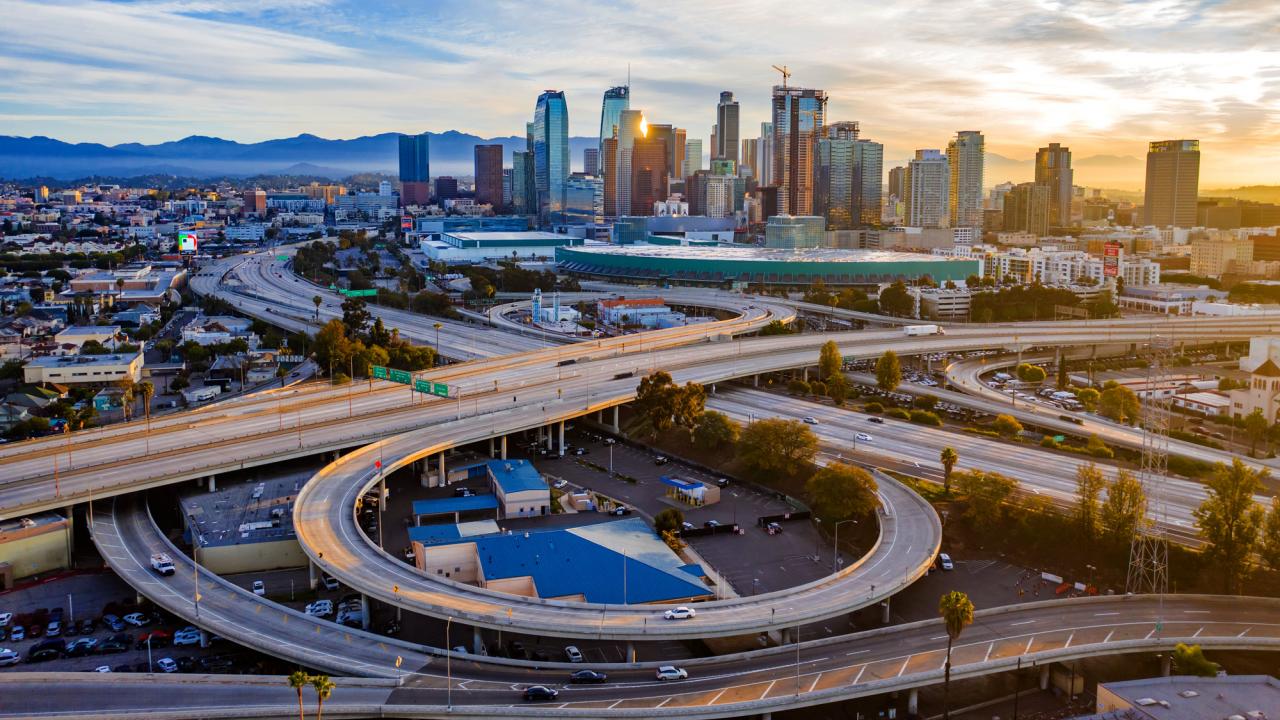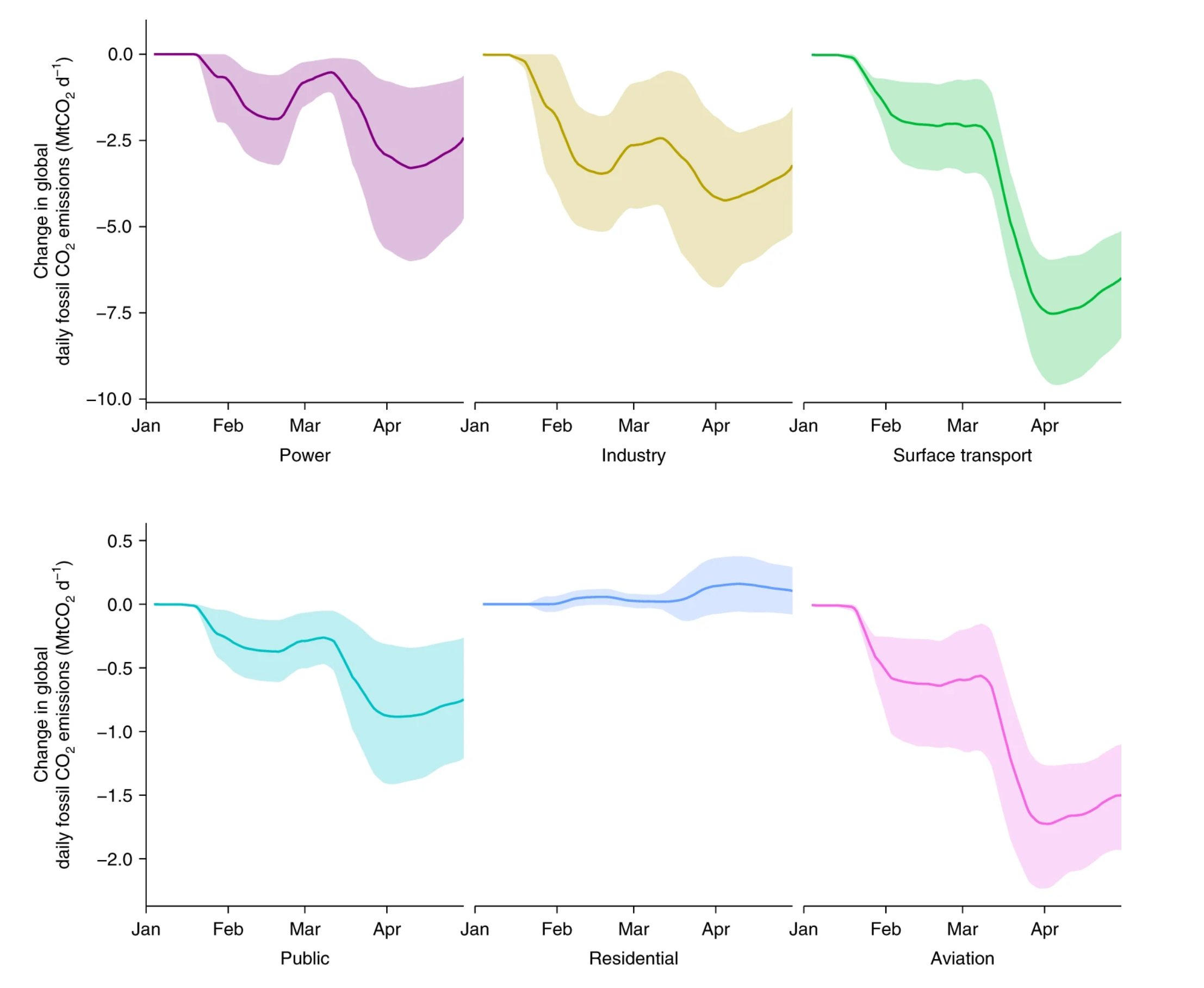
Pandemic shows we need a Herculean effort to slow global warming
Emissions Drop During COVID-19 Illustrates Need for Radical Efforts to Curb Climate Change
There’s at least one upside to having hundreds of millions of people sign up for self-imposed lockdown.
While people have been sheltering in place to curb the spread of the novel coronavirus responsible for COVID-19, they’ve canceled their air travel, avoided mass transit and left their automobiles parked. Industry, too, has slowed down, heeding governments’ orders to halt unnecessary business in order to put the kibosh on community spread of the virus.
All of that has resulted in a lot less burning of fossil fuels and thus, a reduction of the byproduct carbon dioxide (CO2). According to calculations, emissions of the most plentiful and worrisome of the greenhouse gases has decreased by as much as 17 percent worldwide since the pandemic began.
A new study published in Nature Climate Change sheds further light. Researchers examined the CO2 emissions from January-April 2020 of 60 countries that account for 85 percent of the world’s population and 97 percent of global CO2 emissions. China saw the largest drop in CO2 emissions, followed by the United States and then India.
CO2 from surface transport experienced the most precipitous decline, accounting for 43 percent of the diminishment. Combined with the power and industry sectors, the three sectors took 86 percent of the reduction pie.
It’s rather intuitive, really. Hasn’t it been stunning to see America’s highways, normally filled with bumper-to-bumper traffic, empty as commuters hunker down at home? How many have commented how much clearer the Southern California air has been since California Gov. Gavin Newsom enacted a statewide stay-at-home order? Indeed, Los Angeles’ unusually blue sky made national news and went viral overnight.
Meanwhile, air transportation has likewise seen a dramatic decrease – 60 percent – relative to its own pre-pandemic emissions. Yet, aviation is responsible for a decrease of only 10 percent of global emissions. The lesson? As far as global warming is concerned, we’re doing more harm on land than we are in the sky.

This short-lived drop in CO2 emissions is stunning, in large part because it happened so quickly and unexpectedly; a happy coincidence during an otherwise devastating crisis. It took a pandemic to get us here, but we’re suddenly on par with the 2006 worldwide CO2 emissions level. Even so, as good as the emissions reduction news is, it’s not a fix. In fact, it’s nothing more than illustrative of how Herculean the net-zero carbon goal really is.
For starters, as we slowly return to the old normal – and who doesn’t yearn for that? – our CO2 emissions will climb back up. We’ll drive, fly, ride and manufacture again, and that means we’ll be dumping great amounts of CO2 into the atmosphere, as is our custom.
And then there’s the nature of CO2 as a stock gas. Any CO2 added to our atmosphere is piled on top of what’s already there, and there is plenty. Probably enough to last until the end of time, if we refuse to get our arms around the problem. In other words, if we don’t drastically reduce the amount of CO2 we’re producing and generate ways to remove a good deal of what’s blanketing Earth, the best we can hope for is a slowing of global warming, not a return to a pre-Industrial Revolution atmosphere.
According to the U.N. Environment Program, we need to reduce emissions by at least 7.6 percent every year through 2030 to keep warming limited to 1.5 degrees Celsius. And while the United States and the world may meet that goal this year, according the recently released study, a temporary reduction brought about by forced confinement isn’t a long-term solution, especially as countries begin to emerge from shelter-in-place orders.
We are seeing potential climate solutions right now that aren’t pandemic related. California dairies, in collaboration with state regulators and researchers, have reduced their methane emissions by 25 percent since 2015, leading to global cooling as the reduction has an immediate effect on temperatures as well as offsets other greenhouse gas emissions. Researchers and farmers are also working on feed additives and other projects to help them reach their goal of a 40 percent reduction of methane by 2030.
While there is more they can accomplish, farmers are doing their part to reduce greenhouse gas emissions, but it’s no secret that emissions from fossil fuels dwarf those from agriculture. The pandemic-induced drop of CO2 puts into perspective the massive undertaking we face if we want other sectors to pull their weight as well.
The COVID-19 pandemic has taught us we’re in this together. A united, global effort stands the best chance of eradicating this deadly virus. Same goes for the all-important charge to keep our planet from overheating to the point of no return.
It’s not about the burger you’re eating.
It’s about steeling ourselves for disruption and inconvenience as we put our heads together to cure a lethal dependence on fossil fuels.
